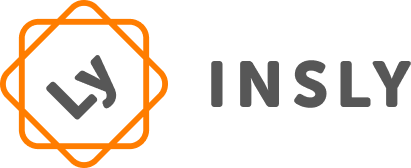Usage-Based Insurance, otherwise known as telematics-based insurance, is rapidly becoming a global phenomenon. Already commonplace in Italy, the United States and the UK, a number of new markets have recently experienced a growth in the adoption of UBI. These include the likes of Japan, South Africa, and Brazil. In many countries across the world, UBI will be used as an effective method of breaking against established players within the global motor insurance market. It will be a substantial recruitment tool with the potential to win profitable customers, as we forecast that over $60billion of automotive premiums will be generated by the Usage-Based Insurance market by 2020.
What is usage-based insurance?
Usage-based insurance (UBI) also known as pay as you drive (PAYD) and pay how you drive (PHYD) and mile-based auto insurance is a type of vehicle insurance whereby the costs are dependent upon type of vehicle used, measured against time, distance, behavior and place.
This differs from traditional insurance, which attempts to differentiate and reward “safe” drivers, giving them lower premiums and/or a no-claims bonus. However, conventional differentiation is a reflection of history rather than present patterns of behaviour. This means that it may take a long time before safer (or more reckless) patterns of driving and changes in lifestyle feed through into premiums.
The simplest form of usage-based insurance bases the insurance costs simply on the number of miles driven. However, the general concept of pay as you drive includes any scheme where the insurance costs may depend not just on how much you drive but how, where, and when one drives.
Pay as you drive (PAYD) means that the insurance premium is calculated dynamically, typically according to the amount driven. There are three types of usage-based insurance:
- Coverage is based on the odometer reading of the vehicle.
- Coverage is based on mileage aggregated from GPS data, or the number of minutes the vehicle is being used as recorded by a vehicle-independent module transmitting data via cellphone or RF technology.
- Coverage is based on other data collected from the vehicle, including speed and time-of-day information, historic riskiness of the road, driving actions in addition to distance or time travelled.
The formula can be a simple function of the number of miles driven, or can vary according to the type of driving or the identity of the driver. Once the basic scheme is in place, it is possible to add further details, such as an extra risk premium if someone drives too long without a break, uses their mobile phone while driving, or travels at an excessive speed.
Telematic usage-based insurance (i.e. the latter two types, in which vehicle information is automatically transmitted to the system) provides a much more immediate feedback loop to the driver, by changing the cost of insurance dynamically with a change of risk. This means drivers have a stronger incentive to adopt safer practices. For example, if a commuter switches to public transport or to working at home, this immediately reduces the risk of rush hour accidents. With usage-based insurance, this reduction would be immediately reflected in the cost of car insurance for that month.
Potential benefits
- Social and environmental benefits from more responsible and less unnecessary driving.
- Commercial benefits to the insurance company from better alignment of insurance with actual risk. Improved customer segmentation.
- Potential cost-savings for responsible customers.
- Technology that powers UBI/PAYD enables other vehicle-to-infrastructure solutions including drive-through payments, emergency road assistance, etc.
- More choice for consumers on type of car insurance available to buy.
- Social benefits from accessibility to affordable insurance for young drivers – rather than paying for irresponsible peers, with this type of insurance young drivers pay for how they drive.
- Higher-risk drivers pay most per use, thus having the highest incentive to change driving patterns or get off the roads, leaving roads more safe.
- For telematic usage-based insurance: Continuous tracking of vehicle location enhances both personal security and vehicle security. The GPS technology could be used to trace the vehicle whereabouts following an accident, breakdown or theft.
- The same GPS technology can often be used to provide other (non-insurance) benefits to consumers, e.g. satellite navigation.
- Gamification of the data encourages good driver behaviour by comparison with other drivers.
- Prepaid insurance (usage-based or not) charges for future rather than past risk, and inevitably predicts some drivers’ risk imprecisely. For example, a distance-based system may not distinguish between highway, city street, or rural back road driving. (Premiums can vary by zone to minimise this effect.) A telematic system may charge a driver who speeds, but otherwise drives in a safe manner, more than a slower driver who changes lanes abruptly, or drives in an inattentive or careless manner.
- For usage pricing, driving habits must be documented, raising privacy concerns especially in the case of systems which use continuous GPS tracking of vehicles. Personal information such as where you drive may also be inferred using only data such as speed and distance driven.
Potential drawbacks
- Prepaid insurance (usage-based or not) charges for future rather than past risk, and inevitably predicts some drivers’ risk imprecisely. For example, a distance-based system may not distinguish between highway, city street, or rural back road driving. (Premiums can vary by zone to minimise this effect.) A telematic system may charge a driver who speeds, but otherwise drives in a safe manner, more than a slower driver who changes lanes abruptly, or drives in an inattentive or careless manner.
- For usage pricing, driving habits must be documented, raising privacy concerns especially in the case of systems which use continuous GPS tracking of vehicles. Personal information such as where you drive may also be inferred using only data such as speed and distance driven.
What would be the ideal UBI solution?
At the 2015 Casualty Actuarial Society Ratemaking and Product Management Seminar, Pinnacle surveyed the attendees on a variety of questions, one of which centered on the topic of usage based insurance: “What would be your ideal UBI solution?”
The surveyed results are as follows:
The results were an inspiration to me in a way that tied closely to the theme of the keynote session: Innovation. It was just a few years ago that installed devices were the clear go-to solution. What I often heard around the industry were the many problems of smartphone based solutions. With OnStar not showing signs of entering the game back then, original equipment manufacturer solutions seemed an interesting but unlikely competing alternative. Had this survey been done at that time, I suspect Installed Devices would have risen to the top.
Driveway, a strategic partner of Pinnacle and developer of a smartphone based UBI application, understood the concerns with a smartphone solution, which included battery drain and incomplete and inaccurate data. In response, they designed an app that addresses many of these concerns, and exemplifies why the scene has changed. Tests conducted show that smartphone UBI data is comparable in quality to UBI data from an on-board diagnostics device, and can be collected without significant battery drain or data plan consumption. Driveway did not attempt to invalidate the concerns but used the concerns to drive innovation.
Proactive responses like these are why I believe the app-based solution has become a top contender in the UBI arena. Will they be the ultimate solution? That remains to be seen. OnStar finally got on board this year, partnering with Progressive’s Snapshot® program to provide driving data beyond mileage driven. Progressive has also expanded options with Zubie, again utilizing a device in the on-board diagnostics port but passing the feedback information directly to the driver’s mobile device.
What will the ultimate solution be? That remains to be seen. However, whatever the final form may be, the insurance industry will have a key role to play. The answers will ultimately be used by insurers, and as a result, insurers must be proactive in continuing the dialogue to help define the best portal for data gathering and challenge the innovators to devise solutions that exceed user expectations.
Sources: Wikipedia, Marketwatch.com, Drivewaysoftware.com



